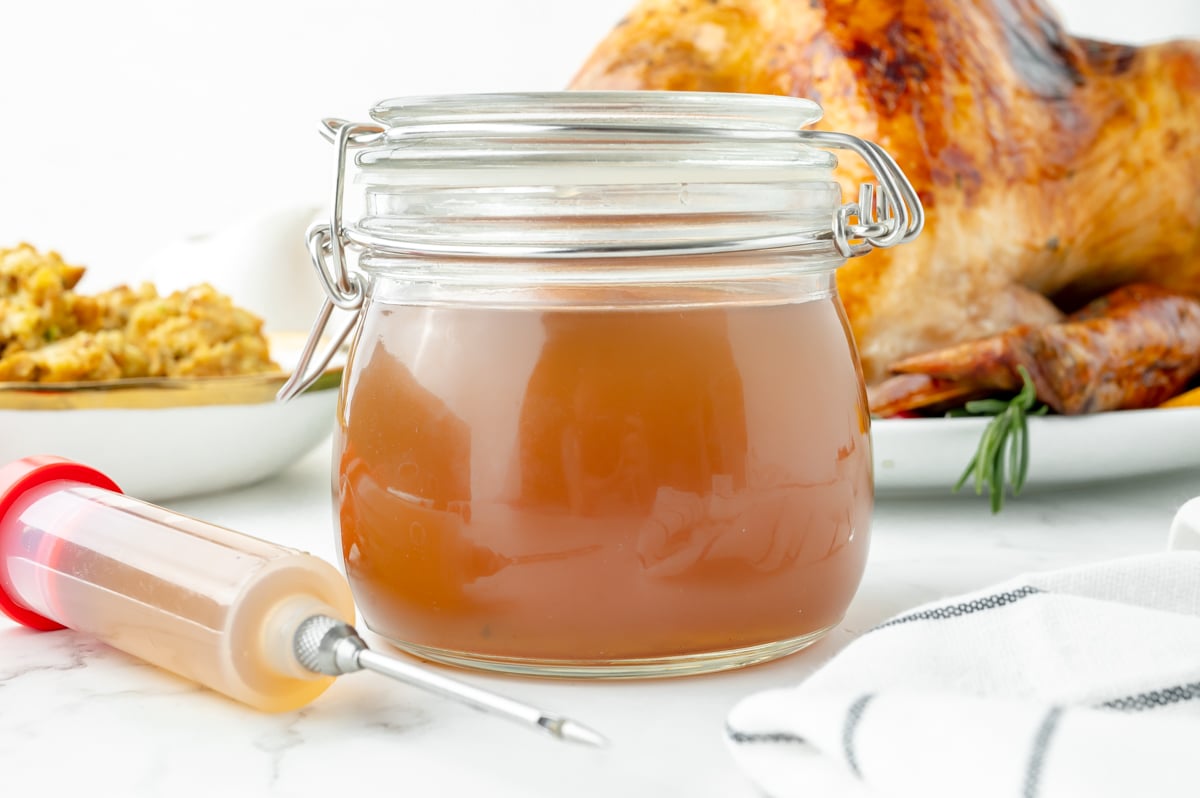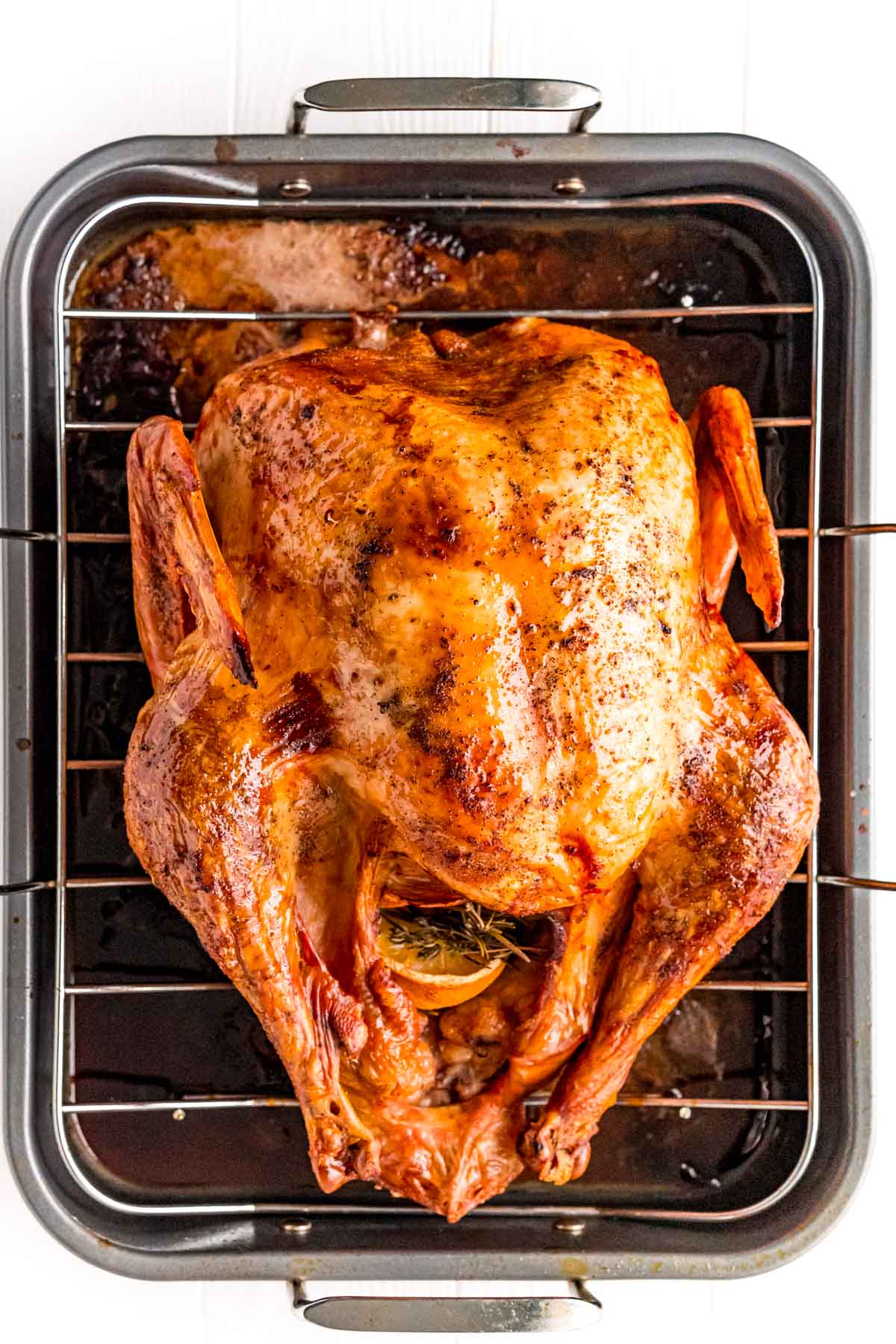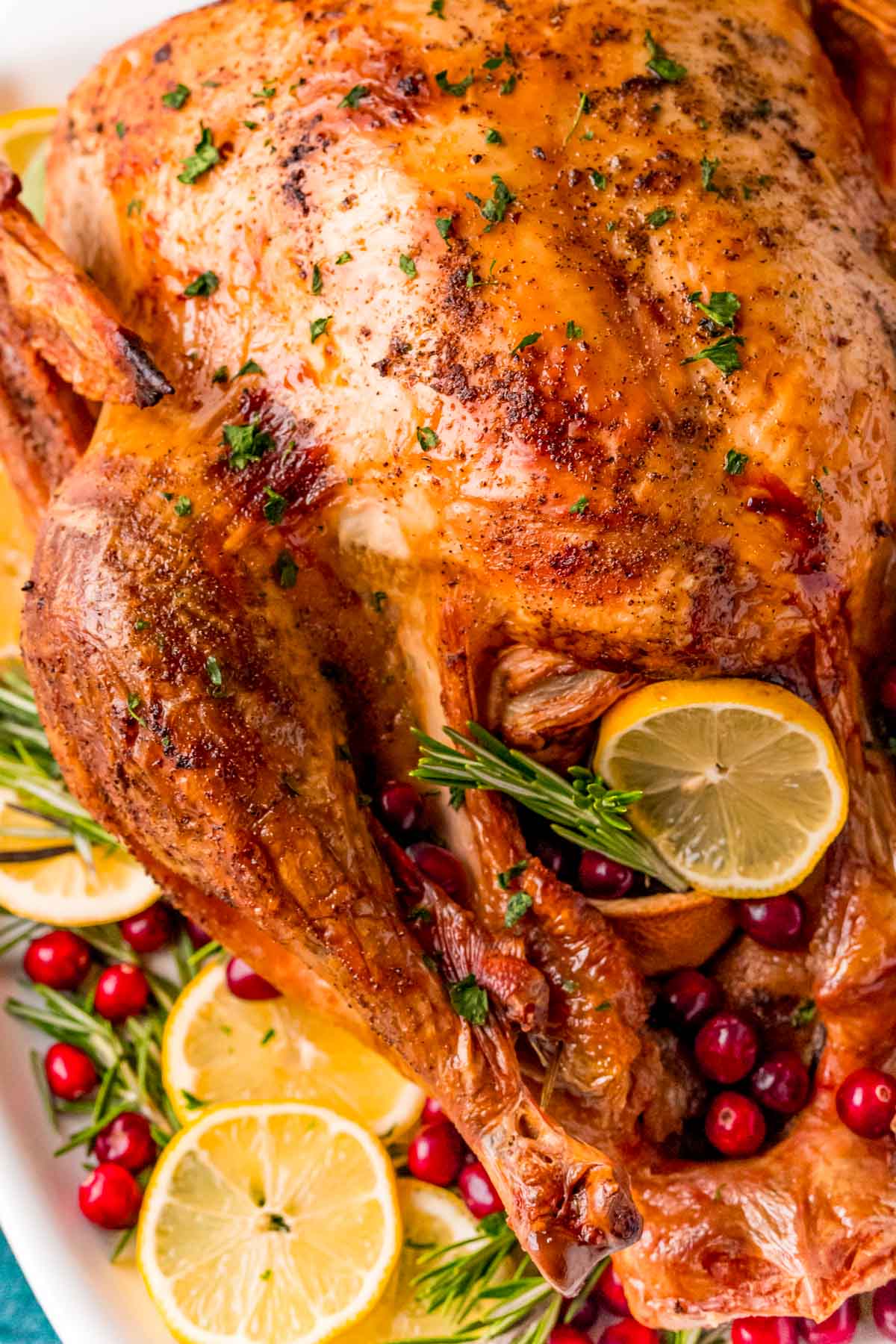Cooking a Turkey is easier than ever! Follow my simple recipe for preparing and roasting a delicious and juicy Thanksgiving Turkey that will impress the whole family!
Injecting turkey with butter is a fantastic technique for ensuring moist, flavorful and tender meat when cooking your holiday bird Butter’s richness seeps into the meat, keeping it succulent and enhancing natural flavors. But when exactly should you perform this flavor-boosting technique? This ultimate guide covers everything you need to know, from ideal timing to step-by-step instructions.
Why Inject Turkey with Butter?
Butter is flavorful and contains moisture – two attributes you want your turkey to have in abundance. Injecting it directly into the meat allows the butter to permeate deep within. As the turkey cooks, the butter melts, basting the interior with its richness. This results in a Turkey that is:
- Incredibly moist and tender
- Infused with buttery flavor
- More succulent with enhanced natural taste
Butter also carries the flavors of any herbs spices or garlic mixed within. So you can customize the taste precisely to your preferences.
When is the Best Time to Inject?
For optimal results, inject the turkey just prior to roasting or smoking. This gives the butter enough time to penetrate deeply into the meat before cooking.
If brining the turkey, inject after brining but before patting dry The turkey will already be well hydrated from the brine, so the injected butter provides extra flavor
If not brining, inject just before seasoning the exterior and placing in the oven or smoker. The butter will help keep the meat juicy as it cooks.
Step-by-Step Guide
Follow these simple steps for properly injecting turkey with butter:
1. Prepare the flavored butter
Melt down 1 stick of salted butter. Mix in desired herbs, spices, garlic, etc. Let cool slightly so it thickens but remains liquid enough to inject.
2. Use a large-capacity injector
Select an injector that can hold a substantial amount of melted butter for fewer refills. Metal injectors are best.
3. Insert the injector deep into thick parts of the turkey
Target the breast, thighs and legs. Angle the needle to reach the middle of each part.
4. Slowly inject the butter as you withdraw the needle
This ensures even distribution as you gradually pull back towards the surface.
5. Inject into multiple locations
Repeat steps 3-4 to infuse butter throughout. The more spots the better.
6. Massage the turkey to distribute the butter
Gently massage the injected areas to help disperse the butter internally.
7. Roast or smoke as usual
Follow your normal cooking method, basting occasionally. Enjoy incredibly moist, flavorful turkey!
Pro Tips
- Warm the butter slightly before injecting – this helps it flow smoothly.
- Focus on the thickest parts of the turkey to ensure it cooks evenly.
- Avoid over-injecting any one area to prevent greasiness.
- Use an instant-read thermometer to monitor doneness. Cook to 165°F.
- Let the turkey rest for 15-20 minutes before carving for juiciest results.
Common Problems and Solutions
Butter oozes out from injection holes – Use less butter per injection site and disperse it over more locations.
Turkey skin feels greasy – Pat the skin dry with paper towels before roasting. Avoid basting the skin late in cooking.
Butter clogs the injector – Make sure butter is fully melted and warm before filling injector.
Butter flavor seems mild – Use more assertive herbs/spices and let turkey rest longer after cooking.
Turkey dries out – Inject more butter next time and monitor temperature closely while cooking.
FAQ
Can I inject flavored butter?
Yes, feel free to mix in any flavors into the melted butter before injecting. Try lemon, rosemary, chili powder – get creative!
How much butter should I inject?
For a 12-15 lb turkey, aim for 4-6 ounces (1/2 – 3/4 cup) of melted butter total. Disperse it evenly.
When should I inject if not roasting the turkey right away?
If holding for a day or two before cooking, inject the night before for best results.
Do I still need to baste if injecting?
Basting helps crisp the skin. But injected butter provides sufficient interior moisture.
Conclusion
Injecting turkey with butter is simple yet transformative. When timed just before cooking, the butter bastes the meat from within, creating a remarkably juicy, flavorful holiday centerpiece. Follow these tips for roasting success and enjoy your best turkey yet.

How To Roast A Turkey
7. Tuck the wings under the turkey (if you remember, I don’t always).
8. Transfer the turkey to the rack in the roasting pan and roast at 450 degrees for 30 minutes.
9. Reduce the heat to 350 degrees F and insert the probe thermometer into the thickest part of the breast. Then, place a double layer of aluminum foil over the breast of the bird and continue to cook until the turkey reaches an internal temperature of 160 degrees F.
10. Remove the turkey from the oven and allow it to rest for 30 minutes before carving.
I only recommend cooking until it reaches 160 degrees F and not 165 degrees F because the turkey will continue to cook after it is removed from the oven. By the time the resting period is over, the meat should be 165 degrees F. Doing this prevents the turkey from being overcooked.

How To Serve Roasted Thanksgiving Turkey
I like to create a beautiful presentation by arranging cranberries, lemon slices, and fresh herbs on the platter around the turkey. I recommend placing the turkey on the table whole and carving it there so it doesn’t get cold or lose a lot of juice before serving.
Plus don’t forget to follow this Roast Turkey up with a slice of Pumpkin Pie and serve it with a glass of Thanksgiving Punch!

